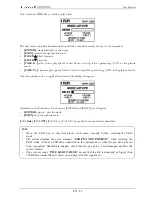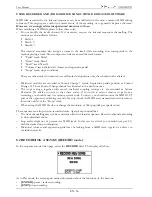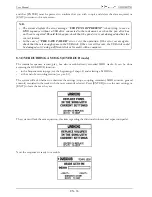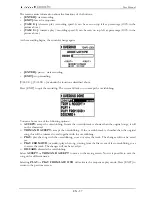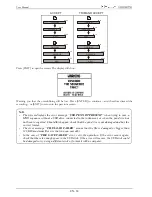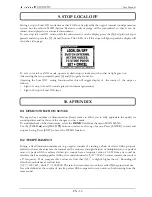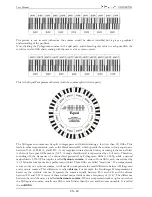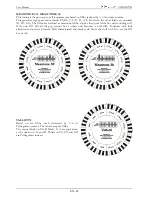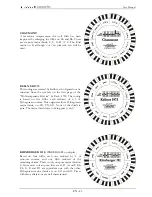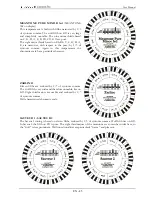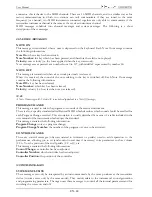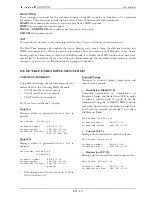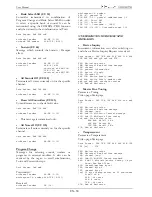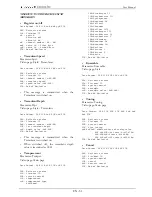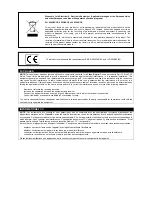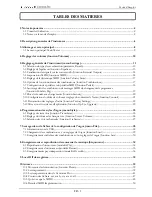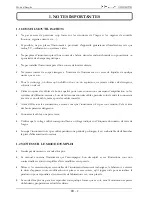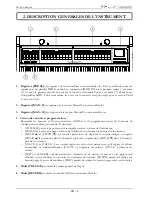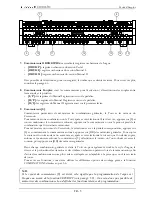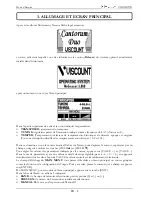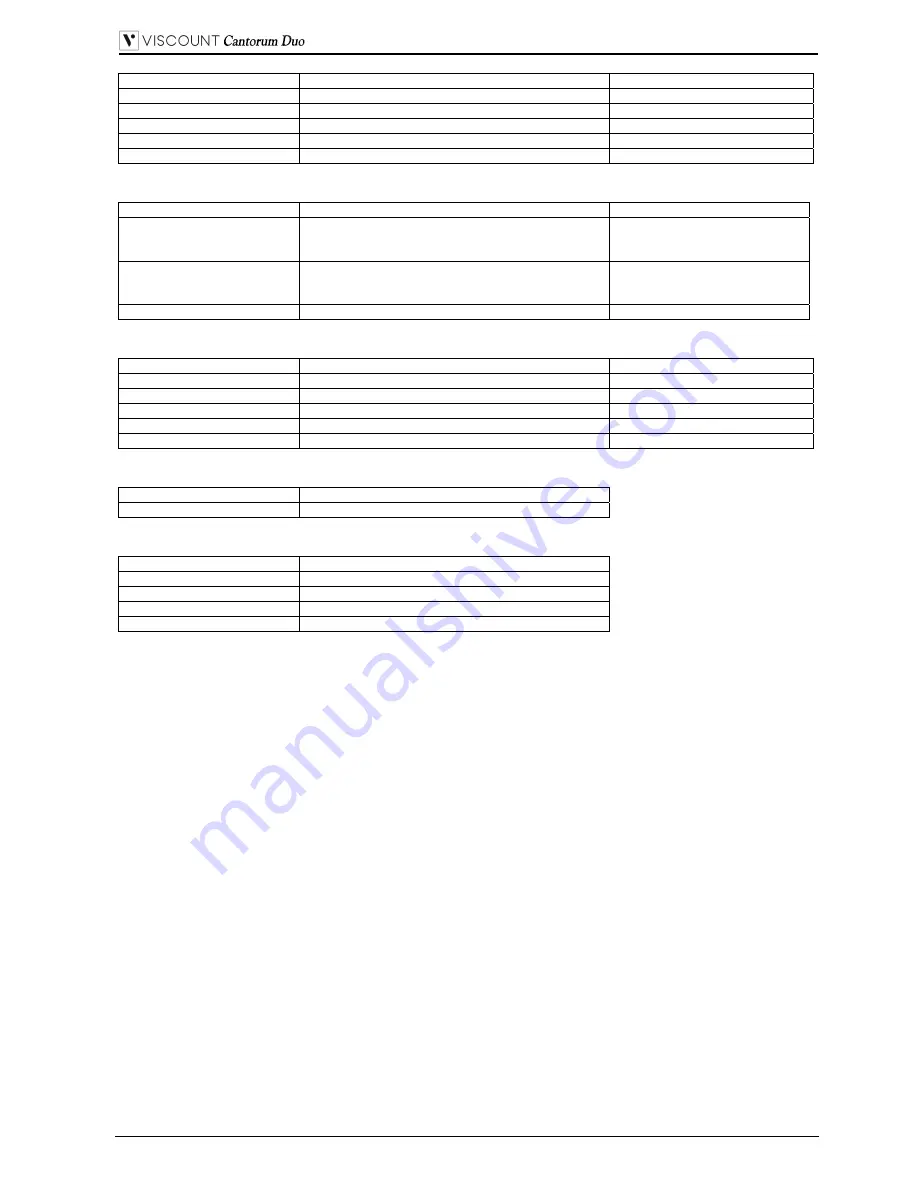
EN - 47
User Manual
PARAMETER POSITION
NOTE
CRESC/EXPR
SETTINGS menu, PEDALS function
EXPR CH->CRESC
SETTINGS menu, PEDALS function
MIDI PEDALBOARD
SETTINGS menu, PEDALS function
LCD CONTRAST
SETTINGS menu, CONTROLS function
VOL. KNOB
SETTINGS menu, CONTROLS function
FILE .CMB
COMBINATIONS CONTENT
NOTE
Tutti
all stops, all couplers, all tremulants, tremulants depth and
speed*, ENC*, AP*, MIDI Program Change and Bank
Select, Orchestra voices*, Style*
* recalled if enabled in
COMBINATIONS function
all General combinations
all stops, all couplers, all tremulants, tremulants depth and
speed*, ENC*, AP*, MIDI Program Change and Bank
Select, Orchestra voices*, Style*
* recalled if enabled in
COMBINATIONS function
Crescendo (16 steps)
all stops, all couplers, all tremulants
FILE .STS
PARAMETER POSITION
NOTE
ENSEMBLE STYLE
menu
TREMULANTS DEPTH
STYLE menu, TREMULANTS function
TREMULANTS SPEED
STYLE menu, TREMULANTS function
VOICES VOLUMES
STYLE menu, VOICES VOLUME function
ORCHESTRA VOICES
STYLE menu, ORCHESTRA function
FILE .STA
CONTENT NOTE
the same of 4 .sts files
1 for each Style
FILE .ALL
CONTENT NOTE
the same of 1 .sta files
the same of 1 .cmb file
the same of 1 .set file
Local Off of each stop
10.5 WHAT MIDI IS
The MIDI interface (Musical Instrument Digital Interface) allows instruments of different makes and
kinds to communicate with each other, using this very specific protocol of codes. This allows the creation
of systems of MIDI instruments, offering much greater versatility and control than is possible with single
instruments. To make this communication possible, all MIDI instruments have two or three 5-pin DIN
connectors called:
-
MIDI IN:
The connector through which the instrument receives the MIDI data transmitted by other
units.
-
MIDI OUT:
The connector through which the instrument sends the MIDI data it has generated to
other units.
-
MIDI THRU:
This connector, not always provided on all instruments, is used for connecting several
units in series, since it transmits the MIDI data exactly as they are received by the respective MIDI IN
port.
Most instruments equipped with MIDI interface transmit MIDI messages which specify, for example,
which note has been played and with what dynamic, by means of the MIDI OUT connector. If this
connector is connected to the MIDI IN connector of another MIDI instrument, such as an expander, the
second instrument will respond exactly to the notes played on the transmitter instrument.
The same type of information transfer is used for recording MIDI sequences. A computer or a sequencer
can be used to record the MIDI data generated by the transmitter instrument. If these recorded data are
sent back to the instrument, it automatically repeats the recorded performance.
MIDI is able to transmit a multitude of digital data by means of just one cable, and thus just one
Summary of Contents for Cantorum Dou
Page 1: ...Manuale Utente IT User Guide EN FR Mode d Emploi Ver 1 0 ...
Page 2: ......
Page 56: ......
Page 165: ......

